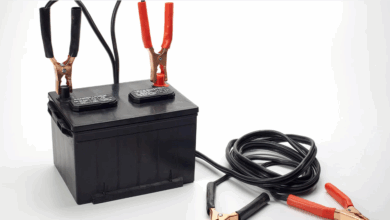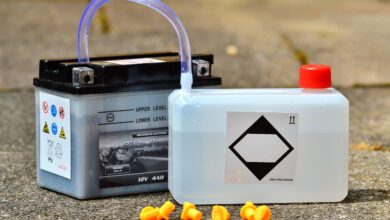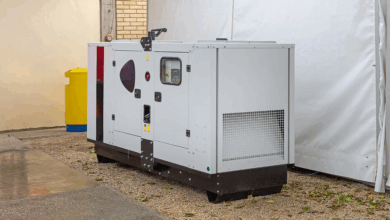Understanding 50 Amp Generators: Capabilities and Uses

Understanding 50 Amp Generators: Powering Your World When the Grid Goes Down (Or When There’s No Grid At All)
In a world increasingly reliant on electricity, a reliable power source is more than just a convenience – it’s often a necessity. Whether you’re facing a power outage at home, hitting the road in a large RV, working on a remote job site, or hosting an outdoor event, the ability to generate your own electricity is invaluable. While small portable generators can handle a few lights and electronics, sometimes you need serious power. That’s where 50 amp generators come in.
Often considered the workhorses of the portable power world, 50 amp generators offer a significant step up in capability compared to their smaller 20 or 30 amp counterparts. But what exactly does "50 amp" mean in practical terms, what can they power, and are they the right choice for your needs? Let’s dive in.
What is a 50 Amp Generator? Defining the Powerhouse
The "50 amp" designation refers to the generator’s maximum continuous electrical current output at a specific voltage. However, generators are most commonly rated by their power output in watts (W) or kilowatts (kW, where 1 kW = 1000 W). The relationship between amps, volts, and watts is defined by the formula: Watts = Volts x Amps.
Most 50 amp generators are designed to provide power at both 120V and 240V simultaneously (split-phase power), similar to the electrical service in most homes. The 50 amp rating typically refers to the maximum current available at 240V, or across the two 120V legs combined.
Let’s look at the power this translates to:
- At 240V: 50 amps * 240 volts = 12,000 watts (12 kW)
- Across the two 120V legs: Each leg can provide 50 amps at 120V, though the total output is limited by the engine’s capacity, usually around 12,000 watts.
So, a "50 amp generator" is essentially a generator capable of producing around 12,000 watts of power. It will feature a heavy-duty 50 amp outlet (typically a 14-50R receptacle, often referred to as a "range" or "RV" outlet) designed to handle this high current safely, in addition to potentially smaller 30 amp or 20 amp outlets.
This 12 kW (12,000 watt) capacity is crucial because it dictates what appliances, tools, or systems the generator can reliably power, considering both their continuous running wattage and their higher startup (surge) wattage.
Capabilities: What Can 12,000 Watts Power?
A 12,000-watt generator is capable of powering a substantial load. While specific needs vary, here’s a general idea of what this kind of power enables:
- Whole-House Essential Circuit Backup: With a proper transfer switch (more on this later), a 50 amp generator can power most or all of the critical circuits in a medium to large home during an outage. This includes refrigerators, freezers, lights, furnaces (most types), well pumps, water heaters, computers, televisions, and multiple small appliances simultaneously.
- Central Air Conditioning: Many central air conditioning units, especially larger ones (3-4 ton units), have significant starting and running wattage requirements that smaller generators cannot meet. A 50 amp generator typically has the muscle to start and run a central AC along with other household essentials.
- Heavy-Duty Appliances: Appliances like electric ranges (partial use), electric clothes dryers, and large electric water heaters often require significant power, especially 240V. A 50 amp generator can handle some of these, though powering all major electric heating appliances simultaneously might push its limits.
- Multiple Power-Hungry Tools: On a job site, contractors can run several power tools – including high-draw items like air compressors, concrete mixers, large saws, and welders (within the generator’s capacity) – without tripping breakers.
- Large RVs (50 Amp Service): Many high-end RVs are built with a 50 amp electrical service specifically to run multiple air conditioners, microwaves, and other amenities simultaneously. A 50 amp generator is essential for powering all the comforts of home when boondocking or staying at campgrounds without electrical hookups.
- Outdoor Events: Powering stages, sound systems, lighting rigs, multiple food trucks, bounce houses, or other equipment for large gatherings.
Key Uses and Applications
The significant power output of a 50 amp generator makes it suitable for several demanding applications:
- Home Backup Power: This is one of the most common uses. When connected correctly via a manual or automatic transfer switch, a 50 amp generator can provide critical power during utility outages. A transfer switch safely isolates the generator from the utility grid, preventing dangerous backfeeding and allowing specific circuits (or even the entire panel, depending on setup) to be powered by the generator. This ensures comfort, preserves food, maintains communication, and keeps essential systems like heating/cooling and water running.
- Large RVs and Mobile Homes: RVs with 50 amp service require a generator of this capacity to fully utilize all their onboard electrical systems, particularly running multiple air conditioners in hot climates. It allows for a luxurious camping experience independent of shore power.
- Construction Sites and Professional Work: Where grid power is unavailable or unreliable, a 50 amp generator becomes the central power hub. It can run multiple saws, drills, compressors, heaters, lights, and battery chargers, allowing work to continue efficiently. Their robust build is often designed for harsh environments.
- Outdoor Events and Entertainment: Festivals, concerts, outdoor weddings, farmer’s markets, and remote filming locations often rely on powerful generators. A 50 amp unit can easily handle the demands of sound systems, lighting, catering equipment, and vendor booths.
- Emergency and Disaster Preparedness: Beyond typical power outages, 50 amp generators are vital during natural disasters when power may be out for extended periods. They can power essential life support equipment, communication devices, and maintain habitable conditions.
Factors to Consider When Choosing a 50 Amp Generator
If you’ve determined that a 50 amp (approx. 12kW) generator meets your power needs, there are still several factors to weigh before making a purchase:
- Power Needs Calculation: While 12kW is significant, you must accurately calculate your specific requirements. List all the appliances/tools you might run simultaneously, find their running watts, and identify the items with the highest starting watts. Add up the running watts and add the single highest starting wattage to get a realistic minimum size needed. Always factor in a little extra capacity.
- Fuel Type:
- Gasoline: Most common, readily available (though storage can be an issue during emergencies), relatively efficient under load.
- Propane (LPG): Easier to store long-term, cleaner burning, quieter operation, but slightly less power output than gasoline.
- Dual Fuel: Offers flexibility to switch between gasoline and propane. Great for preparedness as fuel availability can vary.
- Engine Quality and Size: A larger, high-quality engine will run more reliably and last longer. Look for reputable engine manufacturers.
- Features:
- Electric Start: A major convenience, especially for larger engines.
- Automatic Voltage Regulation (AVR): Protects sensitive electronics from voltage fluctuations. Standard on most good generators.
- Inverter Technology: While less common in this large size class (conventional generators are typical at 12kW), inverter generators produce cleaner power safer for electronics and are more fuel-efficient at lower loads. If you need 12kW of clean power, an inverter model would be significantly more expensive or require paralleling smaller units.
- Portability: Even large generators can have wheel kits and handles. Consider how you will move it.
- Fuel Gauge: Simple but essential for monitoring run time.
- Hour Meter: Helps track maintenance intervals.
- Noise Level: Generators, especially conventional ones of this size, can be loud. Check the decibel (dB) rating at a specific distance (usually 23 feet). Quieter operation is crucial for residential areas or campgrounds.
- Budget: 50 amp generators are a significant investment, ranging from $1,000 to $5,000 or more depending on brand, features, and type (conventional vs. inverter).
- Safety Features: Look for features like GFCI outlets (especially on 120V), low-oil shutdown, and overload protection.
Safety Note: When using a generator for home backup, always connect it via a properly installed transfer switch or interlock kit. Never plug a generator directly into a wall outlet (backfeeding) as this is extremely dangerous and can electrocute utility workers or neighbors. Generators must also be operated outdoors in a well-ventilated area, far from windows and doors, to prevent carbon monoxide poisoning.
FAQs About 50 Amp Generators
- Q: What’s the main difference between a 30 amp and a 50 amp generator?
- Q: Can I plug a 30 amp RV into a 50 amp generator?
- A: Yes, you can, using a 50A male to 30A female adapter cord. However, be aware that the RV will only draw up to its 30 amp limit (around 3,600 watts), but the generator has 12,000 watts available. Ensure the generator’s load is balanced if using other outlets simultaneously. Using an oversized generator for a small load can sometimes be less fuel-efficient, but it is electrically safe with the right adapter.
- Q: Do I need an electrician to install a 50 amp generator for home backup?
- Q: How loud are 50 amp generators?
- A: Generally, conventional 50 amp generators are quite loud due to their large engines, often ranging from 70 to 80+ decibels at 23 feet. Inverter models of comparable power are significantly quieter but also more expensive and less common at this high wattage.
- Q: How much fuel do they consume?
Conclusion
50 amp generators, with their robust 12,000-watt power capacity, are true heavyweights in the portable generator market. They are designed to handle demanding tasks, from powering a significant portion (or all) of a home during an outage to keeping a large RV comfortable or running a busy construction site.
Understanding their capabilities and limitations is crucial. They offer immense versatility but come with higher fuel consumption, noise levels (typically), and cost compared to smaller units. If your needs include powering central air conditioning, a well pump, multiple large appliances simultaneously, or a large 50 amp RV, then a 50 amp generator is likely the right size for you.
By carefully assessing your power requirements and considering the various features and fuel types available, you can choose a 50 amp generator that provides the reliable, high-capacity power you need, whether it’s for emergency preparedness, professional work, or recreational freedom.




![How to Bypass CO Sensor on Generator – [4-Step Safety Guide]](https://www.generator411.com/wp-content/uploads/2025/08/co-sensor-on-generator-390x220.png)